The Six Best Yoga Poses for People Who Aren't Flexible
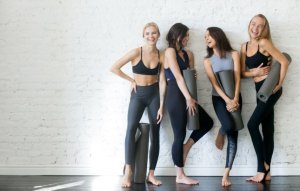
Everyone’s body is different; some are naturally more flexible than others. In any case, you can work on your flexibility and train it just like any other skill. Practicing yoga doesn’t just make you more flexible, but it also helps you to know your body better as well.
Yoga and flexibility
The word “yoga” comes from Sanskrit and means “union”. Yoga originates from India and it’s a physical discipline that works on the mind-body connection. If you’re not very flexible but you want to improve with yoga, this post is for you.
Before you get started
Yoga works on several areas of the body, one of these is flexibility. Yoga is extremely effective for improving flexibility because its positions go hand-in-hand with relaxation.
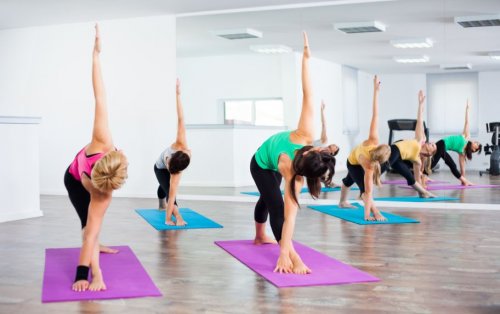
You could perform yoga as soon as you wake up or just before going to bed; either way, you’ll become more flexible and your mind will enjoy relaxation benefits too. Before you get started, you need to understand a few pointers first:
- Use appropriate clothing: wear comfortable, well-fitting clothing. You’ll be making different movements, so choose clothes that won’t hinder your movements.
- Look for a good spot: try to find a spot where you’ll have space to move. Avoid spots where you could trip or become limited due to a lack of space.
- Use a yoga mat or a towel: there are various different kinds of yoga poses, some of them are performed on the floor. To prevent any injuries or bruises, use a yoga mat. If you don’t have one, try a towel.
- Relax and breathe: being calm and relaxed for yoga is crucial. If you’re tense, your muscles won’t stretch out and you won’t be able to maintain a breathing rhythm. This can prevent oxygen from reaching your muscles.
- Enjoy it: take your time to complete the yoga poses, don’t rush!
Yoga poses
Now that we’ve covered the preliminary guidelines, we’re ready for the most exciting part: the yoga poses. Here, we’ll show you six yoga poses, ideal for people who aren’t very flexible.
Marjaryasana – Bitilasana
This pose is also called, “The Cat and Cow”. This pose is intended for warming up your body. It prepares it for the other, more complicated positions to come while working on the lower back and blood circulation. People say that this pose stimulates self-love and emotional balance.
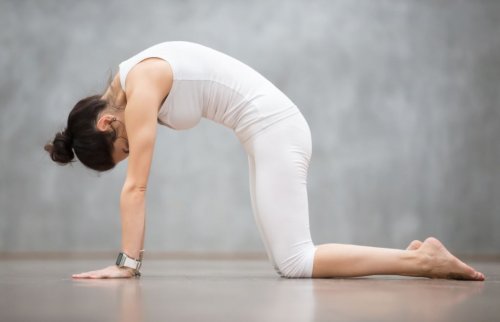
- How to do it: kneel on the floor and place your hands in front of you, shoulder-width apart. Keep your knees in line with your hips and your arms in line with your shoulders. For the first pose (Marjarasana), curl your back upwards and sink your head downwards. In the second pose (Bitilasana), push your stomach downwards, curving your back in the opposite direction to the first pose; lift your head upwards.
Baddha Konasana
Baddha Konasana, or “The Butterfly”, is a pose that will open your hips and improve flexibility in your legs. This pose stimulates the creativity and willpower chakra.

- How to do it: sit on the floor, straighten your spine and bend your knees. Bring your feet as close to your core as possible. You can hold your feet with your hands. Maintain the pose. Remember, always keep your back straight.
Uttanasana
Uttanasan comes from Sanskrit. Uttana means “intense stretch” and asana, “posture“. This pose is wonderful for the body as it helps to stimulate the blood circulation, in addition to tranquilizing the mind. Uttanasana is especially effective at improving the legs’ flexibility, particularly the Achilles’s tendon.
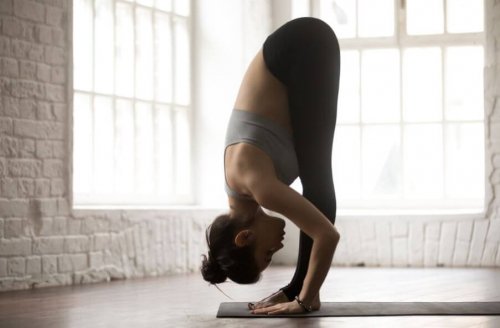
- How to do it: if you’re not very flexible, start by keeping your feet together and slightly bending your needs. After, touch the ground with your hands and keep your back straight. Gradually, you can stretch your knees out, until you can mirror the original position.
Viparita salabhasana
This pose is also known as, “The Superman” because it’s similar to the character’s flight pose. Viparita salabhasana is associated with love and compassion. It also helps improve flexibility and strengthens the back.
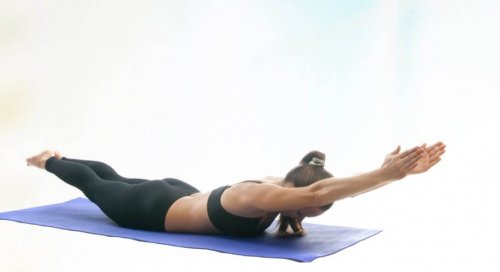
- How to do it: lay down on your stomach and extend your arms out in front of you. After, lift your legs (without bending your knees) and raise the trunk of your body as high as you can.
Trikonasana
Trikonasana or “The Triangle Pose” will focus on balance and flexibility. Some people say that Trikonasana awakens the pleasure chakra.

- How to do it: extend both of your arms and both of your legs, and bend your torso forward, touching the leg of the side that you’re starting with. Extend one arm downwards (not necessarily touching the floor) and the other upwards.
Anjaneyasana
This pose is also called, “The Crescent Moon”. Anjaneyasana opens the hips and stretches the quads. This pose is known to open the heart chakra and stimulates tranquility.
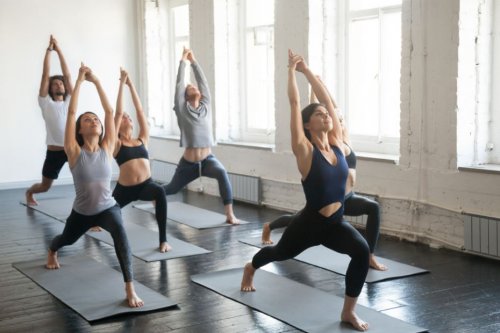
- How to do it: position one foot in front of the other, bending your front knee at a 90-degree angle while keeping the other lowered, close to the floor. You can keep your hands on the ground or extend them upwards, towards the ceiling.
Never forget
If you’re not very flexible, don’t worry! You’ll just need some patience. Flexibility comes with consistency and willingness and it can be painful at times. This is why we recommend never over-working your body because you could injure yourself. Don’t ever forget that your body is a treasure. You should take care of it and treat it with gentleness when you’re trying to improve your flexibility.
Everyone’s body is different; some are naturally more flexible than others. In any case, you can work on your flexibility and train it just like any other skill. Practicing yoga doesn’t just make you more flexible, but it also helps you to know your body better as well.
Yoga and flexibility
The word “yoga” comes from Sanskrit and means “union”. Yoga originates from India and it’s a physical discipline that works on the mind-body connection. If you’re not very flexible but you want to improve with yoga, this post is for you.
Before you get started
Yoga works on several areas of the body, one of these is flexibility. Yoga is extremely effective for improving flexibility because its positions go hand-in-hand with relaxation.

You could perform yoga as soon as you wake up or just before going to bed; either way, you’ll become more flexible and your mind will enjoy relaxation benefits too. Before you get started, you need to understand a few pointers first:
- Use appropriate clothing: wear comfortable, well-fitting clothing. You’ll be making different movements, so choose clothes that won’t hinder your movements.
- Look for a good spot: try to find a spot where you’ll have space to move. Avoid spots where you could trip or become limited due to a lack of space.
- Use a yoga mat or a towel: there are various different kinds of yoga poses, some of them are performed on the floor. To prevent any injuries or bruises, use a yoga mat. If you don’t have one, try a towel.
- Relax and breathe: being calm and relaxed for yoga is crucial. If you’re tense, your muscles won’t stretch out and you won’t be able to maintain a breathing rhythm. This can prevent oxygen from reaching your muscles.
- Enjoy it: take your time to complete the yoga poses, don’t rush!
Yoga poses
Now that we’ve covered the preliminary guidelines, we’re ready for the most exciting part: the yoga poses. Here, we’ll show you six yoga poses, ideal for people who aren’t very flexible.
Marjaryasana – Bitilasana
This pose is also called, “The Cat and Cow”. This pose is intended for warming up your body. It prepares it for the other, more complicated positions to come while working on the lower back and blood circulation. People say that this pose stimulates self-love and emotional balance.

- How to do it: kneel on the floor and place your hands in front of you, shoulder-width apart. Keep your knees in line with your hips and your arms in line with your shoulders. For the first pose (Marjarasana), curl your back upwards and sink your head downwards. In the second pose (Bitilasana), push your stomach downwards, curving your back in the opposite direction to the first pose; lift your head upwards.
Baddha Konasana
Baddha Konasana, or “The Butterfly”, is a pose that will open your hips and improve flexibility in your legs. This pose stimulates the creativity and willpower chakra.

- How to do it: sit on the floor, straighten your spine and bend your knees. Bring your feet as close to your core as possible. You can hold your feet with your hands. Maintain the pose. Remember, always keep your back straight.
Uttanasana
Uttanasan comes from Sanskrit. Uttana means “intense stretch” and asana, “posture“. This pose is wonderful for the body as it helps to stimulate the blood circulation, in addition to tranquilizing the mind. Uttanasana is especially effective at improving the legs’ flexibility, particularly the Achilles’s tendon.

- How to do it: if you’re not very flexible, start by keeping your feet together and slightly bending your needs. After, touch the ground with your hands and keep your back straight. Gradually, you can stretch your knees out, until you can mirror the original position.
Viparita salabhasana
This pose is also known as, “The Superman” because it’s similar to the character’s flight pose. Viparita salabhasana is associated with love and compassion. It also helps improve flexibility and strengthens the back.

- How to do it: lay down on your stomach and extend your arms out in front of you. After, lift your legs (without bending your knees) and raise the trunk of your body as high as you can.
Trikonasana
Trikonasana or “The Triangle Pose” will focus on balance and flexibility. Some people say that Trikonasana awakens the pleasure chakra.

- How to do it: extend both of your arms and both of your legs, and bend your torso forward, touching the leg of the side that you’re starting with. Extend one arm downwards (not necessarily touching the floor) and the other upwards.
Anjaneyasana
This pose is also called, “The Crescent Moon”. Anjaneyasana opens the hips and stretches the quads. This pose is known to open the heart chakra and stimulates tranquility.

- How to do it: position one foot in front of the other, bending your front knee at a 90-degree angle while keeping the other lowered, close to the floor. You can keep your hands on the ground or extend them upwards, towards the ceiling.
Never forget
If you’re not very flexible, don’t worry! You’ll just need some patience. Flexibility comes with consistency and willingness and it can be painful at times. This is why we recommend never over-working your body because you could injure yourself. Don’t ever forget that your body is a treasure. You should take care of it and treat it with gentleness when you’re trying to improve your flexibility.
This text is provided for informational purposes only and does not replace consultation with a professional. If in doubt, consult your specialist.








